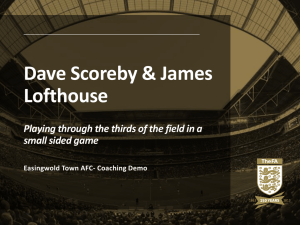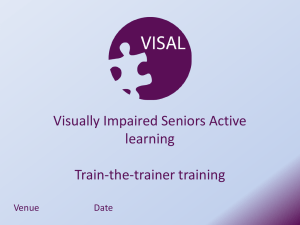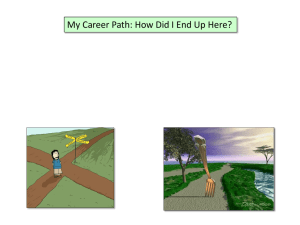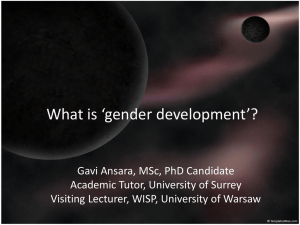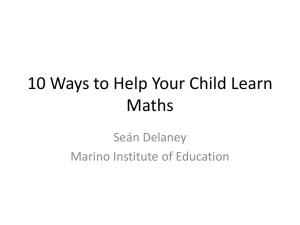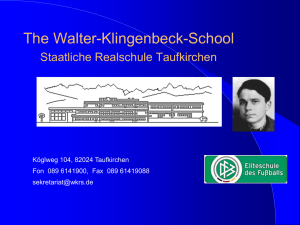Richard Wong - Edge Hill University
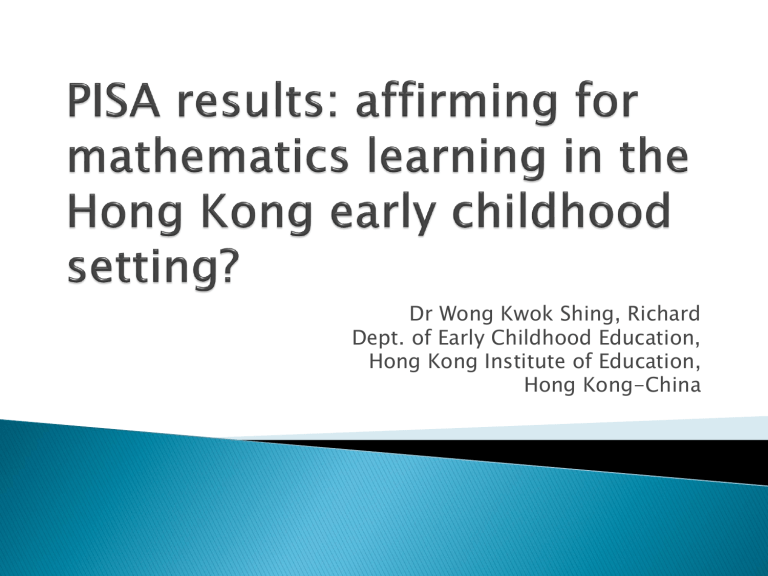
Dr Wong Kwok Shing, Richard
Dept. of Early Childhood Education,
Hong Kong Institute of Education,
Hong Kong-China
What do Hong Kong (HKG) early childhood practitioners teach and what types of activities do they employ in the classroom?
Do HKG teachers help young children build a solid foundation for future maths learning?
Past century: Asia has looked to the West
(超英趕美 , literally ‘surpass Britain, catch up with the US’ )
The latest PISA results in Mathematics: the top three economies/ countries are all in Asia.
Economy or country
Shanghai-China
Singapore
Hong Kong-China
The United Kingdom
The United States
OECD (the average)
Mean
613
573
561
494
481
494
SD
101
105
96
95
90
92
Looks reaffirming
But greater variation across students in the top-performing economies or countries
Equity issue:
◦ A higher proportion of students scoring at level 5 or above in the top-performing economies/ countries
◦ What does this imply?
Past studies:
◦ Greater intellectual capacity of Asian students?
◦ Superior mathematics education in Asia? (see
Leung, 2000)
◦ More demanding parents in Asia (See Chen &
Stevenson, 1995; Kwok & Lytton, 1996; Leung,
1999)
◦ Learners hold high standards for themselves (See
Chen & Stevenson, 1995; Kwok & Lytton, 1996)
What is left to be explored...???
What applies to the primary school setting may not apply to the kindergarten setting
How do HKG preschool teachers help to lay a solid foundation for young children to learn mathematics?
◦ What methods do they use in teaching maths?
◦ Do they teach the skills that are critical for children’s future maths abilities?
◦ What is the content covered at different age levels?
◦ How much do they believe in nurture in contributing to a child’s maths ability?
Particulars
Groups*
BEd Yr 1
BEd Yr 2
BEd Yr 3
PGDE Yr 1
Academic qualifications
Higher Diploma in ECE
Degrees (non-ECE)
Frequency
25
23
20
24
Percent
27.2
25.0
21.7
26.1
62
25
67.4
27.2
Others 5 5.5
Level of the children taught
2-3 yrs old
3-4 yrs old
4-5 yrs old
5-6 yrs old
14
30
15.2
32.6
21 22.8
27 29.3
* Years of teaching experience: 4.41 years (SD = 4.6)
Demographic information
17 items focusing on three types of activities: child-centered, teacher-centered, activities favoured by psychologists
36 items: specific maths content
Other items: teachers’ motivation in learning maths, teachers’ beliefs, etc.
Drilling?
‘Traditional’ approach
Emphasis of teacher educators
Emphasis of dev. psychologists
Forward counting
Teacher-centred demonstration
Homework
Statistics
Relate to real life
Puzzles
Backward counting
Games
Self-exploration
Group-exploration
Patterns
Use of story
Use of picture books
Missing numbers
Forward digit span
Analogical reasoning
Backward digit span
Mean (0-4) SD
3.18
2.88
0.76
0.80
2.67
2.66
2.5
2.24
2.08
2.05
1.99
1.98
1.97
1.84
1.72
1.4
1.36
1.07
1.01
1.04
0.90
1.01
1.07
0.88
0.95
1.05
0.93
0.94
0.91
1.09
1.14
0.99
0.94
1.05
Factorial analysis of variance (p < .05)
No main effect for group except for
group exploration
No main effect for age of the children except for
homework, backward counting, statistics, patterns and missing number
No interaction between group and age of the children
Items
Counting from 1 to 10
Counting from 11 to 20
Counting from 21 to 30
Counting from 31 to 50
Counting from 51 to 100
Arabic numbers: 1 to 10
Arabic numbers: 11 to 30
Arabic numbers: 31 to 100
Odd and even numbers
Prime numbers
Chinese numbers
English numbers
2-3 yrs old
100
50
21.43
7.14
0
100
21.43
0
7.14
0
57.14
92.86
3-4 yrs old
63.33
-
33.33
16.67
6.67
96.67
30
0
10
0
43.33
76.67
4-5 yrs old 5-6 yrs old
100
95.24
80.95
42.86
100
95.24
52.38
71.43
14.29
90.48
95.23
-
88.89
92.59
77.78
-
-
92.59
-
88.89
100
14.81
88.89
88.89
Items
Set 5
Set 10
Set 15
Set 20
Set 21 or above
2-3 yrs old 3-4 yrs old 4-5 yrs old 5-6 yrs old
28.57
21.43
0
0
0
20
3.33
0
0
0
80.95
42.86
4.76
0
0
100
100
44.44
29.63
11.11
Items
3 + 5
12 + 6
3 + 2 +2
12 + 10 + 2
5 - 3
12 - 3
10 - 2 - 3
20 - 10 - 2
2-3 yrs old
7.14
0
0
0
0
0
0
0
3-4 yrs old
13.33
0
0
0
0
0
0
0
4-5 yrs old
47.62
4.76
19.05
4.76
0
0
0
0
5-6 yrs old
100
40.74
66.67
14.81
96.30
33.33
48.15
14.81
Items
Date
Size
Quantity
Location: front and back
Location: middle and beside
Location: right and left
Direction
Grid reference
Simple shape
Complex shape
3D shape
2-3 yrs old 3-4 yrs old 4-5 yrs old 5-6 yrs old
100
100
92.86
93.33
100
100
100
-
-
100
64.29
57.14
0
0
100
28.57
14.29
100
83.33
73.33
6.67
3.33
6.67
13.33
-
90.48
85.71
4.76
4.76
33.33
52.38
-
-
100
-
-
-
-
92.59
48.15
44.44
-
85.19
77.78
Mean (1-7) SD
Self-perceived maths ability 4.17
.98
Past motivation in learning maths
Contribution of nurture
Contribution of nature
3.7
5.59
5.17
1.47
.85
1.12
Note 1: No differences across groups (F-test, p < 0.05)
Note 2: Significant difference between the scores for nurture and nature (t-test, p < 0.01)
Relatively inexperienced teachers…
Not so motivated in learning maths themselves…
Not much time spent teaching maths… (18 minutes on average)
Certainly NOT experts
But believing in hard work!!
Bad news for teacher educators but good news for developmental psychologists!
PISA results: really affirming???
What is the role of tutorial centres (colloquial term: 雞精班 , literally ‘class serving chicken extract’) in Asia?
A case study: school versus tutorial centre
At
School
Addend turn around: 5 + 6 = 11 and 6 + 5 =
11
Addition and subtraction: up to 24
3 addends
Pattern: sequence, complete a pattern
Match patterns: visual skills
Right & left
Mental rotation
Combine figures
3-D shape
Concepts that are learnt at school are reintroduced through a foreign language
A lot of practice: many practice items
Memorization (automacy): no need to compute the answers
Visual skill training
Logical reasoning
The mother said, ‘If you’re a failure, better not live in Asia because you will be trampled on. The system here only helps the “winners”.
If you have problems, study abroad or just go abroad-the system there is more protective and caring.’
System is geared towards examination success but to the detriment of play
Do children have a happy childhood? Or is their childhood being cut short? (Further research)
My own experience…
Short-term predictors (beginning to the end of kindergarten): counting, quantity discrimination, and number naming (Jordan,
2010)
Long-term predictors (beginning of kindergarten to the end of grade three): foundational number sense supports computation and applied problem solving
(Jordan et al., 2010)
Quantitative pathway
Linguistic pathway
Spatial pathway
=> A learner excels in one area of mathematics but not in another area
